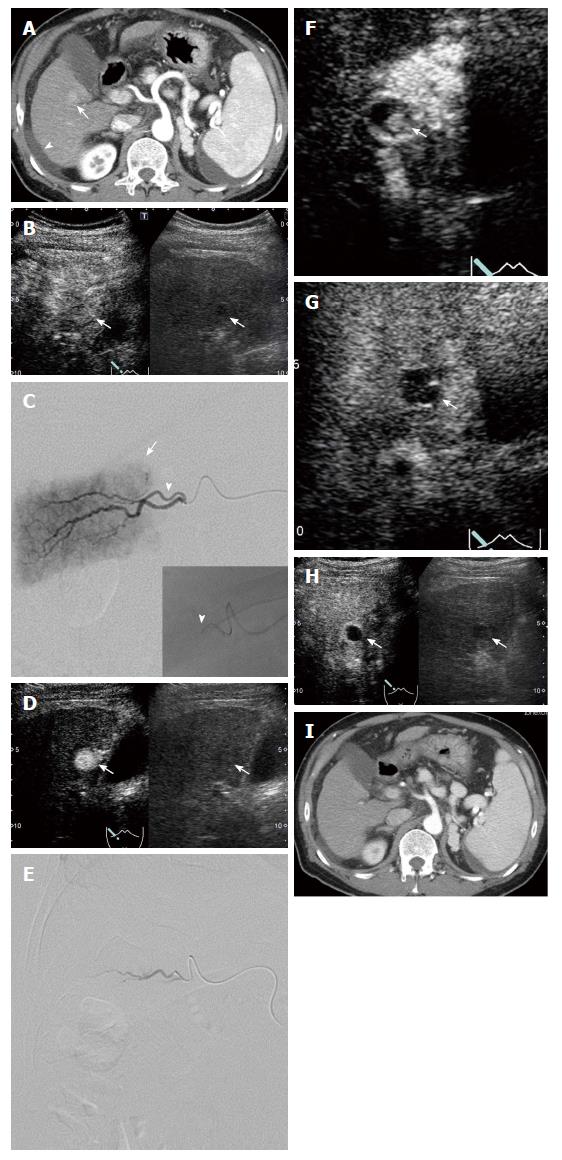Copyright
©The Author(s) 2018.
World J Hepatol. Jan 27, 2018; 10(1): 95-104
Published online Jan 27, 2018. doi: 10.4254/wjh.v10.i1.95
Published online Jan 27, 2018. doi: 10.4254/wjh.v10.i1.95
Figure 2 The patient was a 59-year-old male with alcoholic liver cirrhosis.
DEB-TACE and transcatheter CEUS (IAUS) using Sonazoid for HCC in S5 with a diameter of 15 mm were performed. A: Dynamic CT in the arterial phase before DEB-TACE showed a hypervascular lesion in S5 (arrow) and ascites (arrow head); B: CEUS in the arterial phase (40 s) before DEB-TACE showed a hyperenhanced lesion in S5 (arrow) (Right image: Monitor mode); C: Digital subtraction angiography (DSA) from a branch of A6 (arrow head) before DEB-TACE showed tumor enhancement (arrow). Insert image: A coaxial microcatheter was advanced in the feeding artery (arrow head); D: IAUS from the branch of A6 before DEB-TACE showed a hyperenhanced lesion (arrow). (Right image: monitor mode); E: DSA from A6 after DEB-TACE (when contrast medium disappeared from the blood vessel within 5-6 heart beats) eliminated the tumor enhancement; F: IAUS from A6 after DEB-TACE showed a residual hyperenhanced area in the tumor (arrow) in spite of elimination of tumor enhancement by DSA. Therefore, DEB-TACE for this lesion was performed repeatedly until the hyperenhanced area disappeared; G: IAUS from the right hepatic artery eliminated the residual area in the tumor (arrow); H: CEUS in the arterial phase (40 s) showed unenhancement lesion in S5 three days after DEB-TACE (arrow) (Right image: monitor mode); I: Dynamic CT in the arterial phase did not show the hypervascular lesion six months after DEB-TACE.
- Citation: Shiozawa K, Watanabe M, Ikehara T, Yamamoto S, Matsui T, Saigusa Y, Igarashi Y, Maetani I. Efficacy of intra-arterial contrast-enhanced ultrasonography during transarterial chemoembolization with drug-eluting beads for hepatocellular carcinoma. World J Hepatol 2018; 10(1): 95-104
- URL: https://www.wjgnet.com/1948-5182/full/v10/i1/95.htm
- DOI: https://dx.doi.org/10.4254/wjh.v10.i1.95









